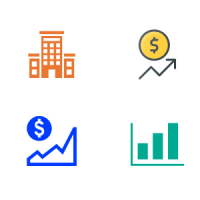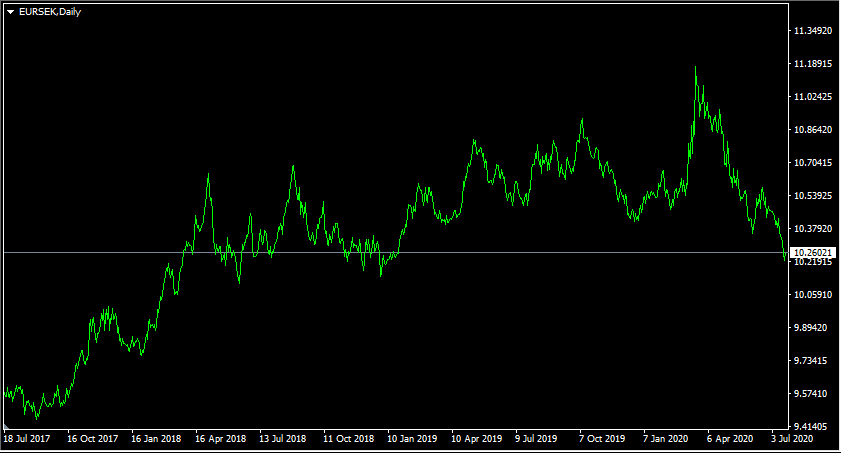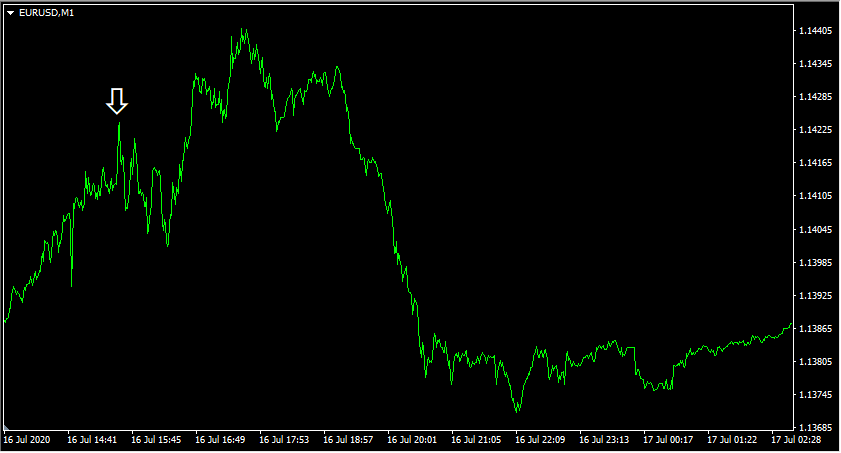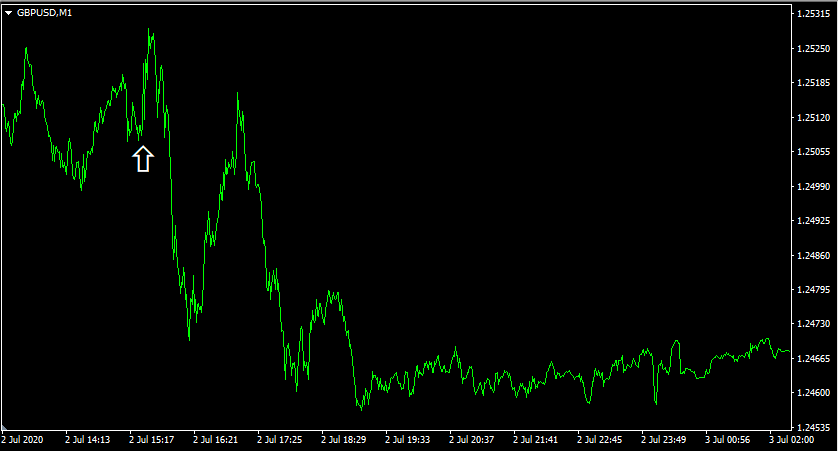Table of content
Unemployment indicators are one of the most important measures of the economic strength of a given country. Consequently, the latest releases of those types of reports can have a major impact on the currency exchange rate movements.
There are at least 3 unemployment indicators that can have a notable influence on the Forex market. The first and most obvious of those is the unemployment rate. This indicator measures the percentage of the workforce who are unemployed. This report is published on a monthly basis. In fact, one of the two mandates of the US Federal Reserve is to maintain full employment.
This obviously does not imply that the US central bank has to achieve a 0% unemployment rate. The reason for this is the fact that it would be an unrealistic and unsustainable goal, even during the economic boom times. Instead, the US Federal Reserve aims for maintaining the maximum sustainable unemployment rate, which is around 5%.
The initial jobless claims report is yet another important unemployment indicator. This measures the actual number of people claiming the unemployment benefits the first time. Obviously, if this number rises, then one can conclude that the country is facing a rising level of unemployment. The opposite is also true. If the overall number of the initial jobless claims falls, then this can be a sign of strengthening the economy.
Finally, we have a non-farm payroll indicator. This measures the number of employees in the country, but it does exclude agricultural workers and some other categories. It is published and updated twice per month. Therefore, this indicator can provide early signals from the labor market, before those tendencies can be confirmed by the official unemployment rate.
The latest releases of those 3 types of reports usually trigger a greater deal of volatility in the market. Therefore, by regularly checking the latest developments in the labor markets of different countries, one can get a better idea about the possible future exchange rate movements.
Unemployment Rate as an Economic Indicator
Nowadays many people still wonder: what is the unemployment rate? How is it measured? Well, in order to answer those very important questions, it is essential to make one distinction. The unemployment rate does not measure the percentage of jobless people compared to the overall population. This might sound strange to some people, but if we take a closer look at this principal it makes a lot of sense.
Here it is important to remember that a significant portion of the country’s population is simply not fit to be a part of the workforce. Those people include the children and the elderly. Therefore, they are unemployed by default and stay so in the near future. Therefore, counting those people in any unemployment indicator can be a major mistake and can easily lead to wrong conclusions.

In addition to those categories, there is obviously some number of disable people, other individuals who can not work due to some sort of health complications. So obviously those people should also be excluded from any unemployment measure.
Finally, there are always some portions of the population who simply do not want to work. The fact that they are unemployed has nothing to do with the economic conditions in the country.
There can be several reasons why some people might choose to remain unemployed. Some people do manage to retire early, the income they receive from investments, allows them to support themselves and their families without having to go to work.
There are also some individuals who decide to temporarily drop out of the workforce, in order to go through some training or education program in order to improve their qualifications. There are also people who receive such large handouts from family members or even governments that they simply have no incentive to start working.
The list of those possibilities can be very long indeed. In all those cases those people can no longer be considered as a part of the workforce. Therefore, the unemployment rate only takes account of those individuals who are actively seeking to get employment.
Therefore, the unemployment rate measures the percentage of the workforce, which still remains unemployed. Here it is important to remember that the actual number of the workforce also constantly changes and does not stay fixed for extended periods of time.
For example, children eventually come of age and start looking for jobs. Some adults might start searching for work after completing their studies. Some people, for whatever reasons who were not interested in finding employment, now might start seeking jobs.
Consequently, as we can see here the actual unemployment rate is influenced not only by the amount of firing and hiring by companies but also by the latest changes in the overall size of the workforce.
Rate of Unemployment in Forex Trading
If we analyze the exchange rates in conjunction with the important economic indicators, it seems clear that in many cases the latest unemployment trends can have a major influence on the Forex market.
The main reason for this is the fact that the unemployment rate is one of the key indicators of the economic strength of a country. Therefore, the high unemployment rate is a sign of wasted potential and everything else being equal, tends to lead to a depreciation of the currency.
To illustrate the influence of this indicator on the Forex market, let us take a look at this daily EUR/SEK chart:

As we can see from the above diagram, 3 years ago the Euro was trading at 9.55 level. During the subsequent months, the pair moved sideways without experiencing any significant changes. However, from October 2017, the single currency started to appreciate steadily.
Actually, this upward trend turned out to last for more than 2 years, with the EUR/SEK eventually reaching 11.20 level during March 2020. At this point, the Swedish Krona started to recover. As the Swedish currency regained some of its losses, the EUR/SEK pair has dropped to 10.26 level. However, despite this development, the exchange rate is still considerably higher than back in 2017.
So what can be the possible reason for the Euro strength during this period? After all, during those years, the European Central Bank kept its key interest rate at 0%. In fact, the ECB policymakers also conducted a quantitative easing program as well. Therefore, the Euro was not a very attractive currency for investors. In sharp contrast to those policies, the Swedish Riksbank has to authorize two rate hikes during this period, pushing its report rate from -0.5% to 0%.
Considering those circumstances, one could expect that the EUR/SEK should have dropped considerably. However, as we can see from our chart, most of the time, the opposite was the case. So, therefore, many people might ask a very logical question: what was the reason behind the Euro’s strength against the Swedish Krona?
Well, actually we might have one possible answer if we take a look at the dynamics of jobless rates in those two economies.
At the beginning of this period, the Eurozone unemployment rate stood at 10.1%, which of course by historical standards was quite high. One of the contributing factors to this type of high unemployment was the EU sovereign debt crisis, which led to a massive expansion of the number of jobless people in some Eurozone countries. On the other hand, the unemployment rate in Sweden stood at 6.6%. This was not ideal, but obviously it was considerably better than in the Eurozone.
However, this state of affairs did not persist for a long time. During the subsequent period, the Eurozone unemployment rate fell steadily. In fact, by the beginning of 2020, the jobless rate for the Eurozone dropped all the way down to 7.4%. One could expect that the economic damages of the outbreak of COVID-19 should have pushed the unemployment rate much higher. Actually, despite those expectations, this indicator stayed stable throughout the Spring 2020 and even nowadays remains at a 7.4% level.
It goes without saying the 7.4% is not a low unemployment rate. However, this does represent a significant improvement over 2017 levels, when this indicator stood at 10.1%.
In the case of the Swedish economy, we can not see much of the improvement in terms of the jobless rate. The unemployment rate fluctuated significantly, but in general, it did rise considerably. By January 2020, the jobless rate already reached 7.5%. The Swedish government did its best to avoid the closing of the economy due to the outbreak of the COVID-19 pandemic. However, this did not prevent the virus from inflicting considerable damage to the Swedish economy. As a result, by May 2020, the unemployment rate in Sweden has reached 9%.
So as we can see from this example, the latest dynamics in the labor markets can have a significant impact on the exchange rate of the currency, The economy might not always reach the optimum unemployment rate, but even some meaningful improvement in this direction can help the currency to appreciate against its peers. Therefore this tendency allows traders to trade with the unemployment rate reports.
Initial Jobless Claims Indicator
The unemployment rate is not the only important measure when it comes to employment indicators. One of the imperfections of the key unemployment rate is that it does not show the actual number of people who lost their jobs during this period. Fortunately, we have an initial jobless claims indicator to address those concerns.
This indicator measures the number of people who applied for unemployment benefits for the first time. It can be a very handy indicator for analysis since this can provide an early warning sign of worsening economic conditions several weeks before the unemployment rate and Gross Domestic Product (GDP) reports can confirm the beginning of the economic downturn.
Consequently, the latest release of the initial jobless claims report is usually accompanied by an elevated degree of volatility in the Forex market. In order to better visualize this, let us take a look at this 1-minute EUR/USD chart, which shows the price action before and after the release of this report:

The white arrow in this chart shows the moment of the release of the initial jobless claims report. The announcement showed that there were 1.3 million new jobless claims in the US during the month. This was slightly lower than during the previous period when this number was at 1.31 million. However, despite this progress, the actual report did miss the analyst forecast of 1.25 million.
As we can see from the diagram, before the publication of the report, the pair was in a short term upward trend. However, as soon as the figures were out, the EUR/USD started fluctuating considerably. At that moment the pair traded at $1.1416 level, after some initial volatility, the Euro has risen to $1.1441 level.
Despite those initial gains, the pair fell sharply, initially dropping all the way down to $1.1372 mark and after some recovery eventually stabilizing around $1.1386 level. So the net result of this announcement was the 30 pip decline of the currency pair, however during several minutes after the publication of the report, the security has experienced a great deal of fluctuation.
Now, obviously losing 1.3 million jobs in a single month is never a good piece of news. Hence the initial appreciation of EUR/USD after this announcement. However, the report also showed that the rate of job losses in the US was slowing down. Also, here it is worth noting that other major economies of the world also struggle in the aftermath of the outbreak of the COVID-19 pandemic. Therefore, as the market digested those realities, the US dollar appreciated and gained some ground against the Euro.
Non-Farm Payroll Publications
Despite all of its uses, one of the drawbacks of the initial jobless claims indicator is the fact that it does not show the extent of job gains during the particular period but only focuses on the number of people losing their employment. However, in order to come up with an accurate picture of the labor market, we obviously need to know both sides of the equation.
Fortunately, we have non-farm payroll reports, also known as NFP, to fill those imperfections. In the Forex economic calendars, it is usually expressed as a number of net job gains or losses during the month. For example, if the headline number of the report is 300K, it shows that during the last month, the net job gains have reached 300,000.
NFP is a very important indicator of the economic strength of the country. It is the key measure of job creation in an economy. So if the latest NFP figures consistently show significant expansion in employment, then this points to the economic strength of the nation. On the other hand, if the level of job creation is very low or if NFP is represented by the negative number, then in some cases this can be a sign of the upcoming economic downturn.
This is why the latest release of the NFP can trigger an increase in the volatility for the Forex market, especially when it comes to the USD-based currency pairs. To illustrate this better, let us take a look at this 1-minute chart:

The actual NFP report has shown that there were 4.8 million net new jobs created during the last month. This number was considerably higher than one during the previous month when it stood at 2.699 million. Actually, the actual number was also higher than the analyst estimate of 3 million.
As we can see from the chart above, the publication of the latest report has triggered a significant degree of volatility in the market. At the time of the announcement, the pair was trading near $1.2509 level. Initially, the pound tried to rally, briefly reaching the $1.2529 mark. However, this appreciation turned out to be very much short-lived.
After this development, the GBP/USD exchange rate dropped sharply and only stabilized around $1.2467. So here we can conclude that the net result of this announcement was the decline of the GBP/USD rate by 44 pips.
This outcome was quite predictable. Those strong job gains suggest that the US economy is now recovering from the stock of the initial shock of the outbreak of the COVID-19 pandemic.
In fact, there were fears that the current economic downturn would be much worse than the 2008 financial crisis. However, if the current employment trends continue, then this might be just a very short-lived economic decline. The actual report has also surpassed the analyst forecasts, the fact which also supported the exchange rate of the US dollar.
So as we can see from those two last examples, trading with the Unemployment rate reports or NFP announcements can sometimes be a rather challenging task. The reason for this is the fact that the initial reaction of the Forex market to those publications is highly unpredictable. One can even argue that sometimes they are very illogical as well.
Therefore, many professional experienced Forex traders prefer to wait for 15 to 30 minutes after those releases to open new trading positions. This allows them to observe the initial market reaction, let it settle down, and then join the trade. This precaution can help traders to reduce their risk exposure and the amount of potential losses as well.
Why NFP Excludes Some Categories of Employees?
So far it seems that the non-farm payroll report is a very useful tool and opening positions with the help of this indicator is easier than the unemployment rate trade. However, despite all of its uses and advantages for many traders, it does have one imperfection. For the employment indicator to be very accurate, one would expect that it should include all of the employees in the country.
Yet, with non-farm payroll reports, this is not the case. The fact of the matter is that as the name suggests, NFP excludes the workers employed in the agricultural sector. There are several reasons for this. Firstly, by its very nature, employment in agriculture is very seasonal. There are some months during the year when a great deal of labor is required to raise crops or take care of the animals. During some other parts of the year, the amount of the necessary work might be much less intensive.

So if NFP included the number of agricultural workers, it would very much become a subject of day to day fluctuations. Consequently, NFP would become a very misleading indicator and can lead traders and economists to make wrong conclusions.
Another major reason for the exclusion of the sector from NFP is the prevalence of informal working arrangements in agriculture. There are many cases where a farmer might employ his family members, relatives, or friends for farming work, without signing an employment contract with them. Therefore, this state of affairs makes it very difficult to track the exact number of workers in this sector on a regular basis.
Finally, there are also plenty of people who do not treat agricultural work as a full-time job. Some of them might do a part-time job to earn some additional income. Alternatively, some people might do this line of work as a hobby or just to provide his or her family with fresh fruits and vegetables, rather than for selling those in the market. It goes without saying that differentiating between those categories and then reporting the latest changes on a regular basis is a very complicated task and requires a massive administrative resource.
Due to those reasons, comparing the number of agricultural jobs to standard city 9 to 5 jobs can be very misleading, therefore, NFP excludes this category in order to make its reports more meaningful.
NFP also excludes the military personnel, as well as the employees of such national security agencies, as the Central Intelligence Agency (CIA) and National Security Agency (NSA). This makes sense since the number of military and national security agency employees has very little to do with the latest economic trends in the country.
This is because the number of people employed in those institutions is determined by the military and national security necessity, rather than on GDP growth or other economic indicators.
For example, the massive expansion of the US military from 1941 to 1945 was not a result of some economic boom. The reasons for this was the Japanese attack on the US soil as well as Germany’s declaration of the war on America. So faced with those national security threats, the US government dramatically expanded its army and navy in order to respond to those challenges.
Therefore, the inclusion of military and national security agency employees in the NFP can make it a very misleading economic indicator. This is exactly why US statisticians do not include those categories in their NFP calculations.
Finally, the non-farm payrolls report also excludes the employees of non-profit organizations. The reasons for this are quite similar to the ones we discussed above. The fact of the matter is that the actual changes in the number of non-profit organizations have very little to do with the latest economic performance of the country.
For example, this category includes charities, pressure groups, or some other types of ideologically driven organizations. Therefore, the expansion or contraction of the number of employees on those organizations can be dependent on those factors which have very little to do with the latest economic growth figures of the country.
How Traders should Trade Unemployment Rate Releases – Key Takeaways
- Unemployment indicators are one of the most important measures of the overall health of the nation’s economy. This includes the unemployment rate, which measures the percentage of unemployed people from the workforce. The initial jobless claims report shows the number of people claiming the unemployment benefits for the first time. Finally, the non-farm payroll report shows the net job gains or losses during the month.
- The latest trends in the unemployment rate can have a significant impact on the exchange rate movements. One of the reasons for this is the fact that the high jobless rate demonstrates the wasted potential of the economy. At the same time, the low unemployment rate is one of the obvious signs of authentic economic strength. The US Federal Reserve does target full employment and achieving this is one of its mandates, along with price stability.
- The non-farm payroll report can provide traders with an early indication of an economic boom or a recession. However, it is worth noting that this indicator does exclude the workers employed in the agricultural sector, the military and security agency employees, and also the people who work at non-profit organizations. Therefore, if an individual wants to calculate the total number of employed people in the country, he or she must add the latest figures of employees of those categories to the NFP numbers.



